Diving Deep into Biodiversity
Leveraging the Latest Technology to Explore Deep Coral Reefs
Rich Pyle
Director of Natural Sciences & Director of EXCORE
Senior Curator of Ichthyology
Bernice Pauahi Bishop Museum
Sponsored by PSW Science Member Frederica Darema
About the Lecture
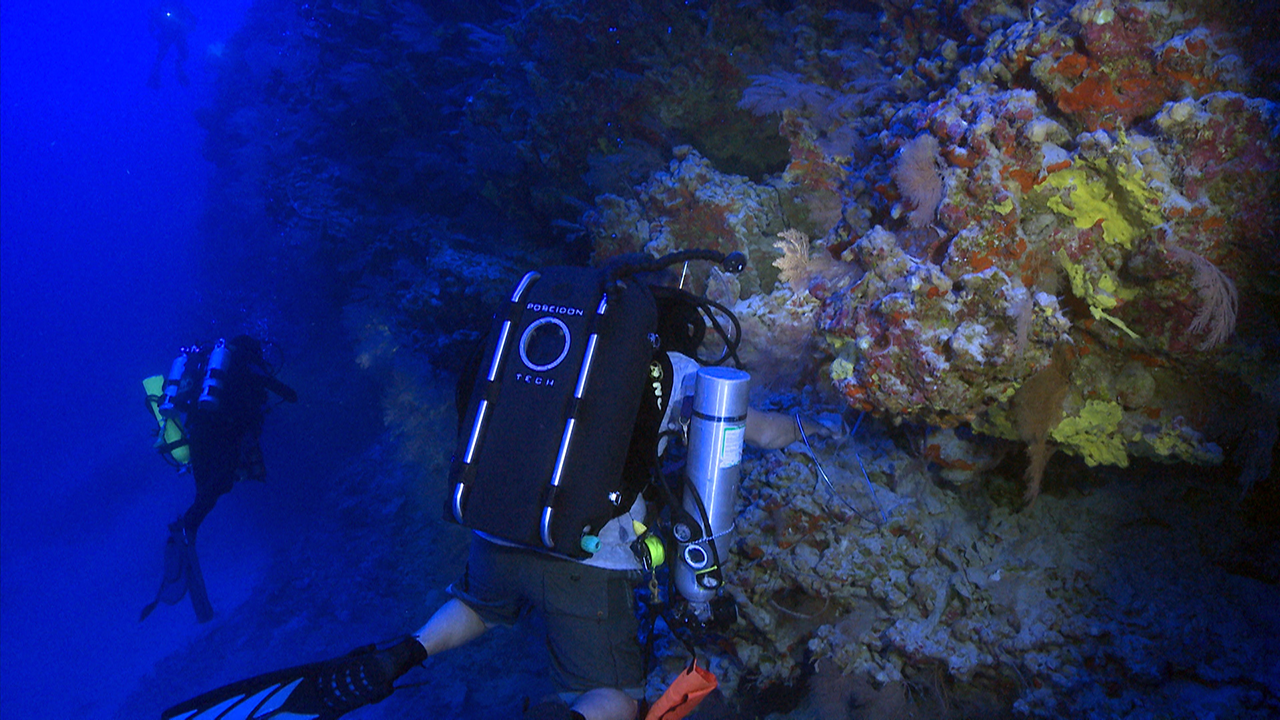
Global Biodiversity is the most valuable resource on Earth. It provides the oxygen we breathe, the food we eat, likely contains cures to many human diseases, and it holds keys to solving important challenges that humanity will have to overcome to survive.
Biodiversity is the great library of life on Earth, accumulated and evolved over billions of years. It is vast and still largely beyond human knowledge. Indeed, even now we are like kindergartners peering through the aisles of a great Universal Library, hardly aware even of the enormity of the information around us, and largely oblivious to its value. Indeed, after more than 250 years of scientific effort, humanity has managed to identify less than 10–20% of earth’s biodiversity. The remaining 80–90% (undiscovered species) remain entirely unknown to us. And very little is known about even those that have been named and catalogued.
Almost by definition, the species we already know are the ones that are easiest for us to find. Many undiscovered species, perhaps the vast majority, inhabit parts of the planet that are exceedingly difficult for humans to access. Oceans cover 70% of the Earth’s surface, and represent 99% of habitable ecological volume. As terrestrial mammals, humans are limited in their ability to explore undersea environments, replying on simple technologies to peek into the shallowest depths, and expensive submersibles and other devices to plumb the abyss. Oceans remain a great unexplored frontier, particularly their depths beyond the reach of ordinary SCUBA diving technologies and techniques.
Coral Reefs are often described as the “rainforests of the sea,” harboring an incredible array of diverse organisms. Although SCUBA has allowed researchers to explore coral-reef habitat down to about 50 meters (150 feet) or so for decades, coral-reef ecosystems extend down to about 200 meters (660 feet) and more. For over 50 years, our team of researchers at Bishop Museum in Honolulu has pioneered the use of new technologies to explore coral reefs. These efforts included the use of early SCUBA and underwater photography in the mid-20th century, followed by the revolutionary application of mixed-gas diving and close-circuit rebreathers for coral-reef exploration starting in the 1980s (and continuing today), the use of advanced robots for deep sea exploration and the use of advanced DNA sequencing techniques to understand the geneology, evolutionary relationships and molecular makeup of creatures in these complex coral ecosystems. Now, Bishop Museum is about to launch the Center for the Exploration of Coral Reef Ecosystems (EXCORE), which aims to leverage decades of pioneering scientific exploration and discovery to fundamentally transform how coral-reef habitats and their inhabitants are documented and to glean a deeper and more comprehensive understanding of coral reefs.
We all feel considerable urgency in this undertaking. Humanity is in a race to document biodiversity before it is lost forever, and there has never been greater urgency for us to pick up the pace. The adverse effects of climate change, pollution, habitat destruction, over-exploitation and other factors are taking their toll on these systems, and may be converging to drive a great extinction. Extinction of any species is an irrevocable event, forever losing whatever important secrets it contained. Losing an entire ecosystem is a consequential calamity. At the least, study will document change in these ecosystems, and at best will prevent further decline and facilitate not only their preservation but also their natural persistence and growth.
This lecture will discuss the technologies we have developed for studying coral ecosystems at depths of several hundred meters, what we have learned about these richly complex ecosystems, and how we can ensure that they are not driven to extinction.
Selected Reading & Media References
Weiss, Kenneth R. 2017. Naturalist Richard Pyle explores the mysterious, dimly lit realm of deep coral reefs. Science 355(6328): 900–904. doi:10.1126/science.aal0838 (2 March 2017) http://www.sciencemag.org/news/2017/03/naturalist-richard-pyle-explores-mysterious-dimly-lit-realm-deep-coral-reefs
Menduno, Michael. 2017. The race to save the greatest library on Earth. Research, Education and Medicine: Researcher Profile. Alert Diver. November 2, 2017. 57-61. https://dan.org/alert-diver/article/the-race-to-save-the-greatest-library-on-earth/
Elias, Jason. 2023. Living at the Edge of the Unknown: Deep Coral Reef Pioneer Dr. Richard Pyle on A Life of Exploration. Big Deep – An Ocean Podcast. 12 September 2023. 21 minutes. https://open.spotify.com/episode/0iobNuMcPDM6miLEQNMVIj
Science Funding: A question of Priorities (2017, 4.5 mins)
https://www.youtube.com/watch?v=TbhEaYpVrSs
Endangered — Earth’s greatest library | Richard Pyle | TEDxHonolulu (2012, 15 mins)
https://www.youtube.com/watch?v=ZRFGUT594ug
Creatures Of The Deep (2015, 1 hr, 11 mins)
https://www.youtube.com/watch?v=ZD3RuqLP18U
Deep Diving, New Species Discovery and the Greatest Library on Earth, Natural History Museum (2015, 1 hr, 4 mins)
https://www.youtube.com/watch?v=8cUnkz9wSCU
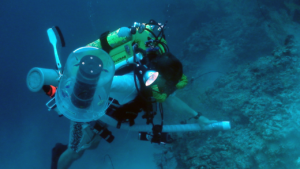
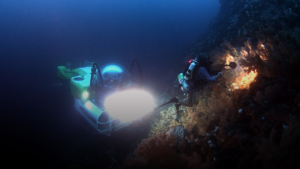
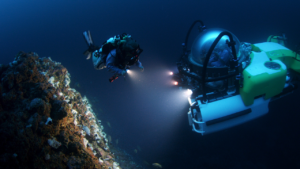
About the Speaker
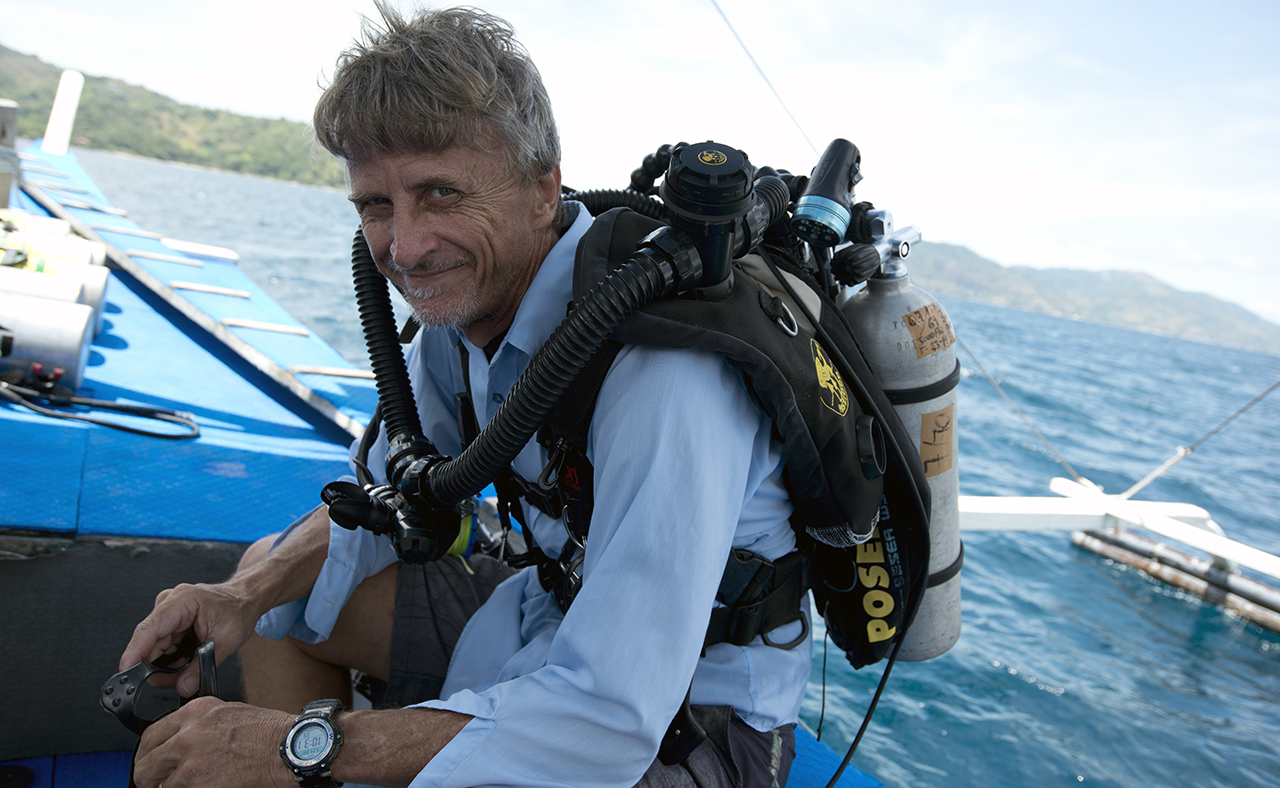
Richard L. Pyle is the Director of Natural Sciences and Senior Curator of Ichthyology at Bernice P. Bishop Museum in Honolulu. He is also a Commissioner and Counselor for the International Commission on Zoological Nomenclature (ICZN), and he conceived, developed and maintains ZooBank (zoobank.org; the official online register for scientific publications and names under the ICZN) and other biodiversity data systems.
His primary research interest is to explore and document Mesophotic Coral Ecosystems (coral-reef habitat at depths of 30-200 meters, also known as the coral-reef ‘Twilight Zone.’ He has led and supported over 80 research expeditions around the tropical Indo-Pacific, with particular emphasis on the discovery of new species of fishes and other organisms, and on documenting patterns of biogeography and depth distributions. Richard’s other focus is the development of computer database systems, primarily to manage systematic and biogeographic information. He is an active participant in international groups that develop standards for biodiversity information management and exchange.
Richard has published over 220 scientific, technical and popular articles and chapters on ichthyology, diving technology, and biodiversity data; given over 270 public presentations (including two TED talks); posted dozens of blogs (including one of the first-ever real-time scientific expedition blogs in 1997, and several others published by the New York Times). He has been featured in over 50 film projects (IMAX, National Geographic, BBC, Discovery Channel, and others); been profiled in over 50 published articles (including a cover-feature of Science); received dozens of awards (including a Genius Award and Best and Brightest award from Esquire Magazine, and the prestigious “NOGI” award for science from the Academy of Underwater Arts and Sciences); and he has served in dozens of roles for organizations focused on research, exploration, technology and international data standards.
He earned a BS and PhD in Zoology at the University of Hawaii at Manoa.
Social Media
Webpage: http://hbs.bishopmuseum.org/staff/pylerichard.html
YouTube Channel: https://www.youtube.com/@marineexploration
Minutes
On April 19th, 2024, in the Powell Auditorium of the Cosmos Club in Washington, D.C., President Larry Millstein called the 2,494th meeting of the Society to order at 8:04 p.m. ET. He began by welcoming attendees, thanking sponsors for their support and announcing new members. Scott Mathews then read the minutes of the previous meeting which included the lecture by Philip DeShong, titled “We Have You Surrounded: Encapsulation and Its Application to Vaccine Formulation and Drug Delivery”. The minutes were approved as read.
President Millstein then introduced the speaker for the evening, Rich Pyle, Senior Curator of Ichthyology at the Bernice Pauahi Bishop Museum & Director of EXCORE. His lecture was titled “Diving Deep into Biodiversity: Leveraging the Latest Technology to Explore Deep Coral Reefs”.
The speaker began by presenting a metaphor of a burning library, and the fire fighters trying to both put out the fire and save as many books as possible. He then went on to discuss biodiversity, and the fact that the DNA of every species contains information that has been passed down for billions of years. Therefore, he claimed, each species can be thought of as a book, and biodiversity can be thought of as “Earth’s greatest library”. Climate change and the increasing rate of extinction is therefore analogous to the burning library.
Pyle emphasized the fact that conservation is as much about preserving unknown species as it is about preserving known species. He indicated that because about 99% of the Earth’s habitable ecological volume is in the oceans, the oceans are the most important place to “scout” for unknown species. He noted that humans have had considerable success cataloguing biodiversity on land, but we have barely begun to explore the extent of marine biodiversity. He said, “As terrestrial mammals, we have been limited to the briefest excursions to the shallowest depths.” Pyle explained that his primary goal as Director of EXCORE (The Center for the Exploration of Coral Reef Ecosystems) and Senior Curator at the Bishop Museum is to leverage modern technology to overcome these limitations and extend the range over which humans can explore marine biodiversity.
Pyle then discussed the “Mesophotic Coral Ecosystem”, the so-called twilight zone between 50- and 200-meter depths. This region is generally too deep for conventional SCUBA and too shallow for most submarine expeditions. He described how mixed-gas rebreathers allowed he and his colleagues to explore this twilight zone more extensively than ever before. He then discussed other technologies that have increased the range of human exploration in the maritime environment. These included: submersibles, submersibles coordinating with human divers, human controlled underwater robots, autonomous underwater robots, 3D imaging, stereo videogrammetry, and environmental sensor arrays.
Pyle claimed the EXCORE project has discovered close to 1,000 new fish species, and is finding them at a rate of 12 new species per hour of bottom time. He said that EXCORE is responsible for creating “ZooBank”, the official online registration system for scientific names of animals. He ended his lecture by saying “We cannot afford to continue the status quo in battling the fire that engulfs the global biodiversity library”.
The lecture was followed by a Question and Answer session:
A member asked how the data being gathered by EXCORE could be used to guide decisions and policy moving forward. Pyle responded first by saying that this data could be important for genetically modifying certain species, particularly corals, to be more robust or resilient to climate change, but he doubted such efforts could be implemented on a scale that would make a difference. He went on to say that there are too many “unknown unknowns”, and that we therefore do not know in advance what the value of this data will be.
A guest asked about efforts to look for the species of folklore, like the Loch Ness Monster. Pyle replied that the Loch Ness Monster was “not on his radar”, but that folklore plays an important role in his work. He said that in several Pacific Island regions the indigenous knowledge of fish species vastly exceeded what scientist understood, and that the oral history and folklore of local peoples has benefited our understanding of marine life.
A member asked if Pyle and his team are studying cold-water, deep species of coral like the ones living off the coast of Norway. Pyle responded that these corals are essentially “mono-cultures”, and are therefore less interesting from the point of view of biodiversity.
A member asked why there are more endemic species on deeper reefs than in shallow waters, and what effect that has on loss and recovery of biodiversity. Pyle responded that the likely mechanism is related to glacial cycles and the rise and fall of sea level. Shallow coral reefs tend to form on sloped regions of the sea floor, while deep corals tend to grow on more vertical structures. As sea levels rise and fall, shallow coral habitat appears and disappears, whereas the deep coral habitat can rise and fall with sea level like a tide gauge. He said that endemic species are the most sensitive in terms of biodiversity loss because, by definition, they only exist in one place.
After the question and answer period, President Millstein thanked the speaker and presented him with a PSW rosette, a signed copy of the announcement of his talk, and a signed copy of Volume 1 of the PSW Bulletin. He then announced speakers of up-coming lectures, made a number of housekeeping announcements, and invited guests to join the Society. He adjourned the 2494th meeting of the society at 10:07 pm ET.
Temperature in Washington, DC: 13.9° Celsius
Weather: Cloudy
Audience in the Powell auditorium: 73
Viewers on live stream: 35 …for a total of 108 live viewers
Views of the video in the first two weeks: 301
Respectfully submitted, Scott Mathews: Recording Secretary